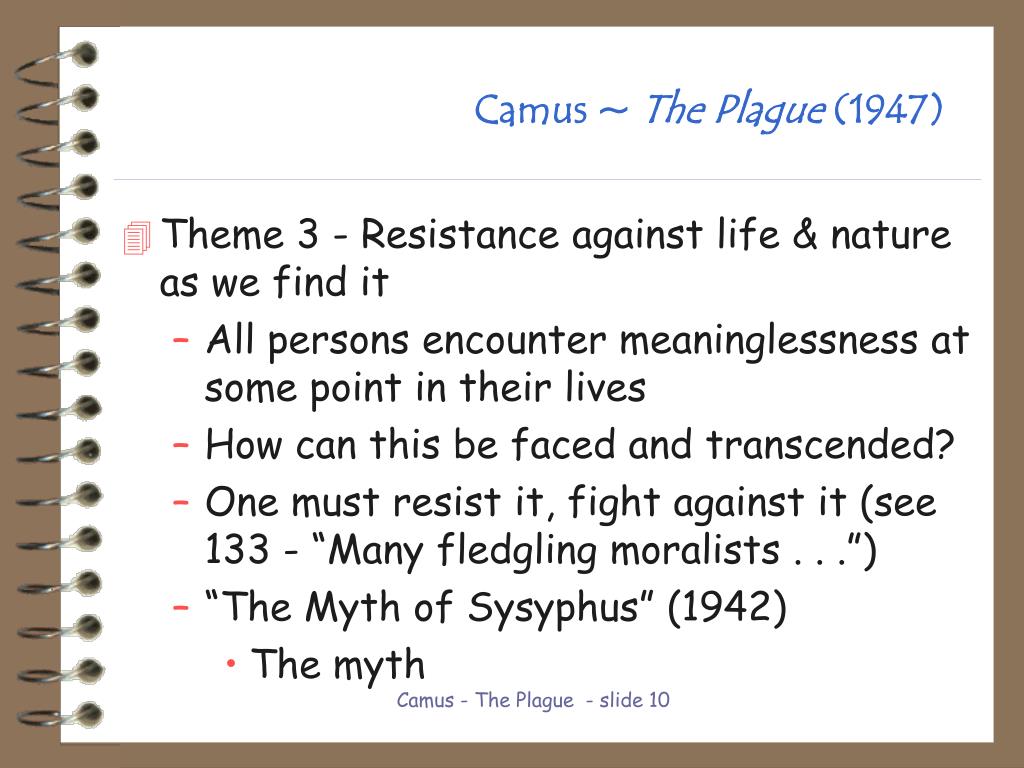
The inaction of the Prefect and other authorities becomes about not standing up to injustice, and Rieux and Tarrou are seen as heroes of something like the French Resistance.

But the setting of 194– still matters, especially when you keep in mind that many see The Plague as a war allegory. Anyway, since the narrative doesn’t mention everyone being in the midst of a huge war, we figure it’s either after the war, or there is no war in this fictional world, or – and this is highly likely – no one in Oran cares anyway. We don’t know exactly what year The Plague takes place, since all the narrator tells us in his introductory chapter is that it was "194–." Ah, yes, 194–, we remember it fondly. The 1940s were World War II time, at least from 1939 to 1945. Rambert’s inquiry about Arab living conditions only makes sense if you know the skinny on the area’s history: France colonized Algeria and it was still French territory in the 1940s native Arabs were considered "beneath" the French colonists, so racism and the staggering lack of equality – socially and legally – were a big deal. There’s quite a bit to cover here, so settle down now.


Oran is a real town in Algeria on the Northwest corner of Africa and therefore bordering the Mediterranean.


 0 kommentar(er)
0 kommentar(er)
